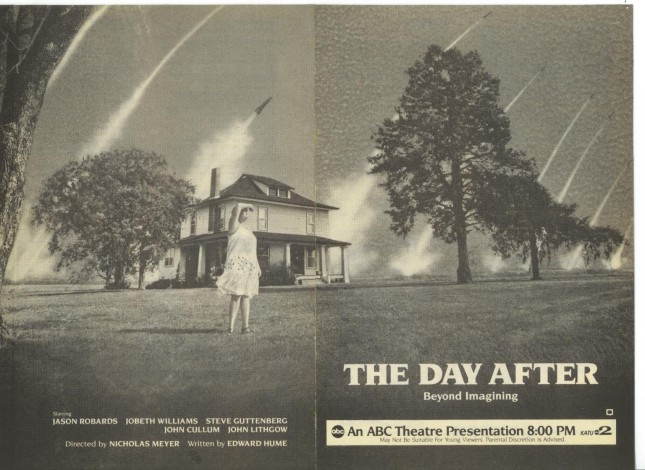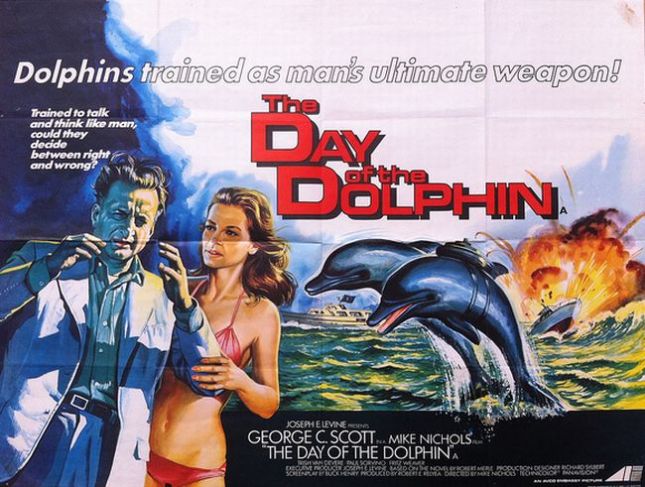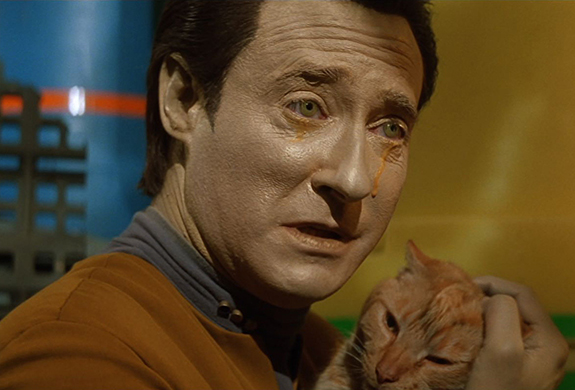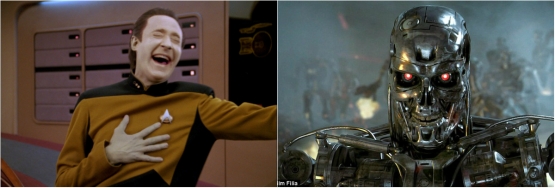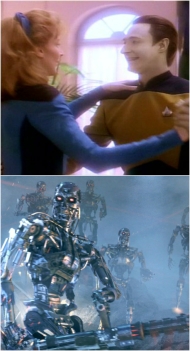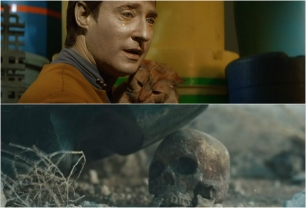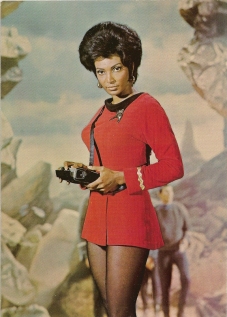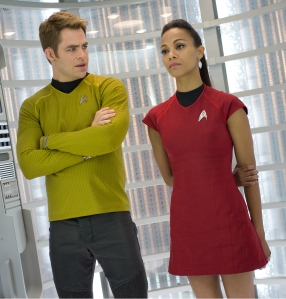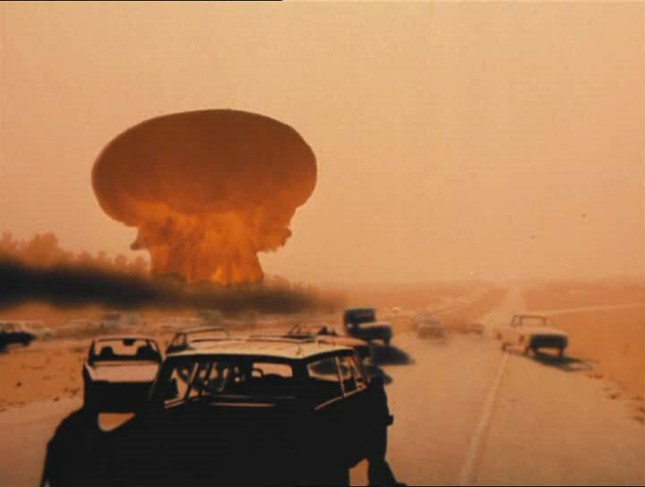
If you see this, you are the walking dead.
When I was a child, I went through a phase when I was terrified of nuclear war. I’m not sure what caused it, because the days of “duck and cover” drills were before my time. But I remember very well that when the ABC TV movie The Day After was originally broadcast in 1983, I refused to watch it. 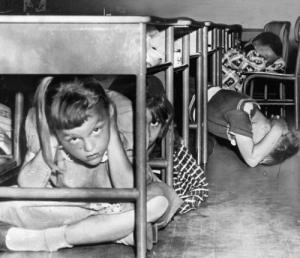 I knew I couldn’t handle it. Even then, I was aware that we had both a Naval Air Station and a Strategic Air Command base nearby, so we definitely had a few ICBMs with our name on them.
I knew I couldn’t handle it. Even then, I was aware that we had both a Naval Air Station and a Strategic Air Command base nearby, so we definitely had a few ICBMs with our name on them.
This week, I finally watched the film. The Day After, for those unfamiliar tells the story of a nuclear attack and its aftermath as experienced by the residents of an ordinary mid-western city. It isn’t particularly graphic in its depiction of radiation sickness and injuries–much less so than documentary footage of the aftermath of Hiroshima and Nagasaki. The brutality is in the helplessness we face in the merciless onslaught of the bombs, the breakdown of society, and the inevitability of death. And I can say that I made the right choice not to see it back then, because I would have needed psychotherapy.
The ink was still drying on the SALT I treaty when I was born. The United States and the Soviet Union were trying to rein in the nuclear dragon that had been unleashed in the New Mexico desert in 1947. But in 1972, there were more than 42,000 nuclear warheads worldwide. By the time The Day After premiered, that number, in spite of SALT I, would grow to almost 60,000.
At the time–fortunately–I had no idea just how close to the edge of Armageddon we were all living. A total nuclear war in those days would have meant the end of human civilization and quite possibly the extinction of the human species entirely.
Since 1986, nuclear stockpiles have been reduced to about 15,000, although more countries now have the Bomb. So we still live with the threat of nuclear terrorism and small scale nuclear war, which could still be devastating. But hopefully, we’re moving past the era of total destruction.
I have an older niece who was born after the Soviet Union collapsed. I’m pretty sure she’s never worried about nuclear holocaust. My other nieces are just starting elementary school. Hopefully, they will never know that kind of fear.
Perhaps the end is still nigh. The scientific community is in near-unanimous agreement that we’re heading toward a climate catastrophe. And maybe the other kind of apocalypse is preferable, because even most politicians could understand the destructive power of nuclear weapons. Climate change on the other hand is treated as a partisan political issue, with many on the “conservative” side in the United States denying that we can do anything about it or that it even exists at all. And it’s a disaster that takes place over decades, rather than seconds.
The Day After ignited a firestorm of public discussion about the Arms Race. According to Nielsen, 62% of American televisions and 100 million viewers were tuned in. Even those who didn’t watch knew about it. Following the original airing, ABC broadcast a live panel discussion about the film which included Carl Sagan, Elie Wiesel, William F. Buckley Jr., and Henry Kissinger, among others.
But that was 1983, there were three national TV networks, PBS, and depending on where you lived, a handful of local unaffiliated stations. So you could have these “Television events” that practically everyone watched. Now, we have cable TV, video on demand, streaming services like Netflix, Blu-ray, games, the internet and many other distractions competing for our eyeballs. How do you get the attention of America, much less the world?
